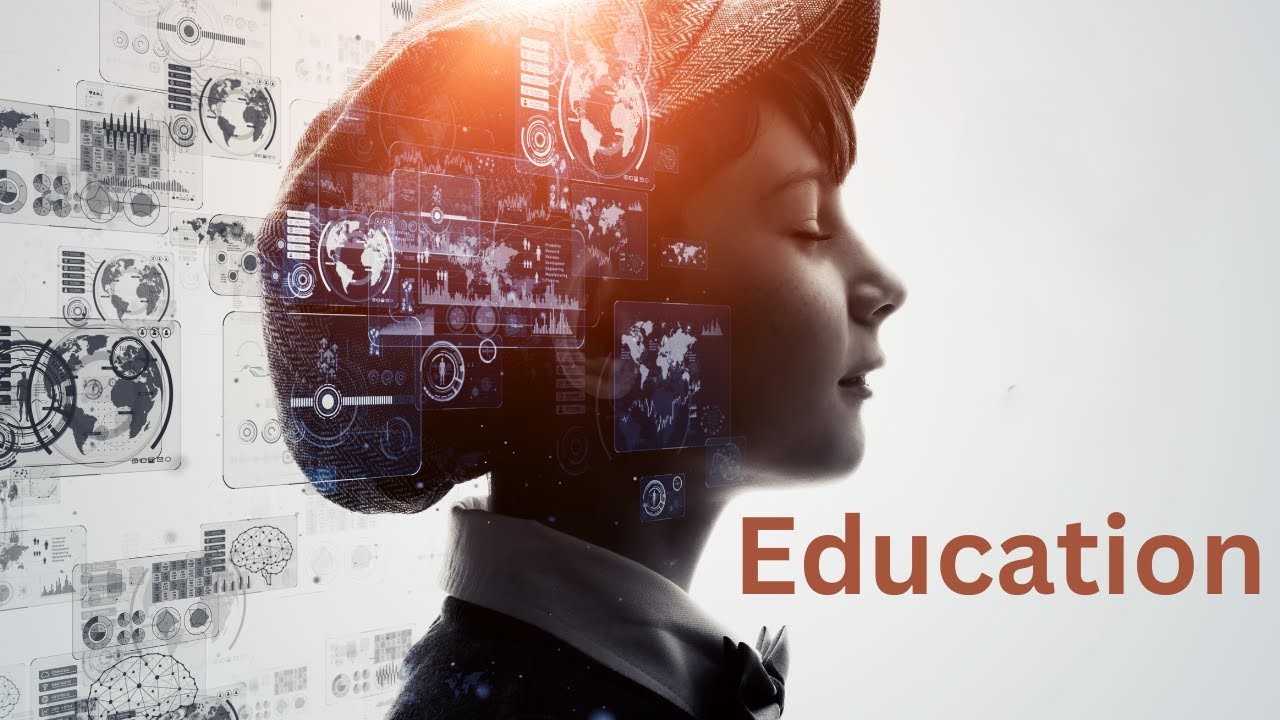Introduction
Education is evolving faster than ever, driven by technological innovation, changing societal needs, and a growing emphasis on personalized learning. The traditional classroom is transforming into a dynamic environment where students engage with content in new and exciting ways. From virtual reality to AI-driven instruction, the future of education is filled with opportunities to enhance learning experiences and outcomes. But what exactly does this future look like? In this article, we’ll explore the most significant trends shaping the future of education in 2024 and beyond. Whether you’re an educator, parent, or student, these insights will help you understand how education is adapting to prepare learners for the challenges and opportunities of tomorrow.
Top Education Future Trends
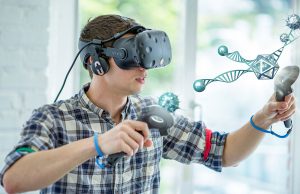
1. Personalized Learning
One-size-fits-all education is becoming a thing of the past. Personalized learning tailors instruction to each student’s strengths, needs, and interests, allowing for more meaningful and effective learning experiences.
Tip: Use adaptive learning technologies to track student progress and adjust instruction accordingly.
Example: Platforms like Khan Academy and DreamBox offer personalized learning paths based on individual performance.
2. Technology Integration and EdTech
Technology is revolutionizing classrooms, making learning more interactive and accessible. From tablets to smartboards, EdTech tools enhance engagement and foster collaboration.
Tip: Incorporate interactive tools like Kahoot! or Google Classroom to create a more dynamic learning environment.
Example: Schools using virtual reality (VR) allow students to explore historical sites or conduct virtual science experiments.
3. Hybrid and Remote Learning Models
The pandemic accelerated the shift toward hybrid and remote learning. These models offer flexibility and accessibility, allowing students to learn from anywhere.
Tip: Ensure a balance between in-person and online learning to maximize engagement and flexibility.
Example: Universities offering hybrid courses combine online lectures with in-person labs for a comprehensive learning experience.
4. Focus on Soft Skills and Emotional Intelligence
As automation takes over routine tasks, skills like critical thinking, creativity, and emotional intelligence are becoming more important. Schools are placing greater emphasis on developing these soft skills.
Tip: Incorporate group projects, discussions, and activities that promote collaboration and empathy.
Example: Programs like SEL (Social and Emotional Learning) help students build resilience and interpersonal skills.
5. Lifelong Learning and Micro-Credentials
Learning doesn’t stop after graduation. Lifelong learning and micro-credentials are becoming essential for career growth and adaptability in a rapidly changing job market.
Tip: Encourage students and professionals to pursue online courses, certifications, and workshops to stay current.
Example: Platforms like Coursera and Udemy offer micro-credentials in various fields, from coding to leadership.
6. Gamification and Game-Based Learning
Gamification makes learning fun and engaging by incorporating game elements like points, badges, and leaderboards into educational content.
Tip: Use apps and games that align with educational goals to make learning more interactive.
Example: Duolingo uses gamification to help users learn new languages in a fun, engaging way.
7. Artificial Intelligence and Data-Driven Instruction
AI is transforming education by providing personalized learning experiences and analyzing student data to improve outcomes.
Tip: Leverage AI tools to identify learning gaps and provide targeted support.
Example: AI-powered platforms like Squirrel AI adapt lessons based on student performance and learning styles.
8. Sustainability and Global Citizenship Education
Education is increasingly focusing on sustainability, environmental awareness, and global citizenship to prepare students for a connected, responsible future.
Tip: Integrate lessons on climate change, cultural awareness, and ethical decision-making into the curriculum.
Example: Programs like UNESCO’s Global Citizenship Education promote sustainable development and intercultural understanding.
The Importance of Online Learning
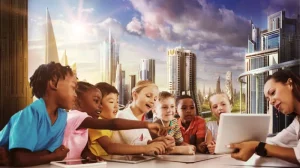
Online learning has become an essential part of education today. It allows students to access lessons, assignments, and resources from anywhere with an internet connection. This flexibility is especially helpful for students who may have busy schedules or live far from schools. Online learning also gives students the chance to learn at their own pace, which can lead to a better understanding of the material.
Impact on Traditional Classrooms
Education technology is changing traditional classrooms. Teachers now use digital tools like projectors, tablets, and online resources to make lessons more engaging. Students can use computers to research, collaborate, and submit their work, making classrooms more interactive. This shift is helping to create a more modern, tech-friendly learning environment.
Personalized Learning with Technology
One of the most exciting benefits of education technology is personalized learning. With digital tools, lessons can be tailored to meet the unique needs of each student. Some students might need more time on a topic, while others can move ahead faster. Technology helps create lessons that adapt to a student’s individual pace, allowing for a more personalized learning experience.
Global Access to Education
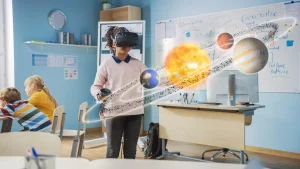
Technology is making education accessible to students around the world. No longer are students limited by where they live. With the internet, students from different countries can learn the same material and even work together on projects. This global access to education is breaking down barriers and offering opportunities for students who may not have had access to traditional schools.
The Role of Teachers in the Digital Age
Even with the rise of education technology, teachers still play a key role in the learning process. While technology can help provide resources and personalize learning, teachers are still essential for guiding students. Teachers help students understand complex topics, encourage critical thinking, and provide support. In the digital age, teachers are becoming more like facilitators who use technology to enhance their lessons and student experiences.
Preparing Students for the Future
Education technology is not just about making learning easier; it’s also about preparing students for the future. As technology continues to evolve, it’s important for students to learn how to use these tools in their everyday lives and future careers. By using technology in the classroom, students develop valuable skills like problem-solving, digital literacy, and communication, which will help them succeed in a tech-driven world.
The Impact of 5G on Education
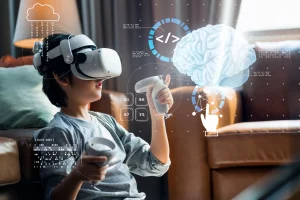
The arrival of 5G technology is going to change how we use the internet in education. With faster internet speeds, students will be able to access content more quickly and without delays. It will allow for smoother video calls, real-time collaboration, and faster downloads of learning materials. 5G will also help expand access to online learning, especially in areas where the internet connection was slower before.
Cost-Effective Education with Technology
Education technology can also help reduce the cost of learning. Traditional textbooks can be expensive, but with digital resources, students can access materials online for free or at a lower cost. This makes education more affordable for families and schools. Schools can also save money by using online platforms for learning instead of paying for physical classroom materials and supplies.
Training Teachers to Use Technology
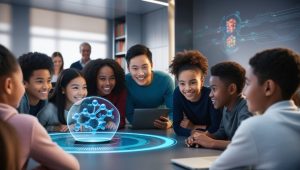
For education technology to be effective, teachers need proper training. Teachers should know how to use new tools and platforms to engage students and improve lessons. Professional development programs are important to ensure that teachers are confident in using technology. When teachers feel comfortable with digital tools, they can better support their students and create a positive learning experience.
Challenges of Education Technology
Despite its advantages, there are challenges in using education technology. Some students and teachers may struggle with access to devices or the internet. Others may find it hard to adapt to new tech tools. Additionally, there are concerns about online security and privacy. Overcoming these challenges requires proper training, resources, and a focus on equity for all students.
Future of Education Technology

The future of education technology looks very promising. As technology continues to grow, we can expect even more advanced tools, like artificial intelligence and virtual reality, to play a bigger role. These advancements will make education more personalized and immersive. The future also involves more inclusive education, where all students, no matter their background, can take part in learning opportunities. Technology will continue to shape how we teach and learn for years to come.
Analysis Table: Key Trends in Education
| Trend | Description | Effect on Students | Effect on Teachers | Effect on Education System |
|---|---|---|---|---|
| AI in Education | Uses AI to personalize learning and automate tasks. | Tailored lessons, real-time feedback. | Less administrative work, more teaching time. | More efficient and adaptive education. |
| Online and Hybrid Learning | Mixes online and in-person learning. | Flexible learning, access from home. | More flexible teaching methods. | Broader access, reduced costs. |
| Gamification | Uses game elements in learning. | Engaging, fun learning. | Creative teaching techniques. | Increased student participation. |
| Lifelong Learning & Microcredentials | Short, focused courses for career skills. | Continuous learning and career growth. | New opportunities to teach skills. | More skill-based education. |
| VR/AR in Education | Uses VR/AR for immersive learning. | Fun, interactive lessons. | New teaching tools and methods. | More engaging, hands-on learning. |
| Personalized Learning | Adapts learning to individual needs. | Learning at their own pace. | Data-driven insights to improve teaching. | More individualized education. |
| Mental Health Focus | Supports student mental well-being. | Reduced stress, better well-being. | Supportive classroom environments. | Healthier students. |
| Global Awareness | Teaches about global issues and cultures. | Broader perspectives on the world. | Opportunities for international collaboration. | More culturally aware students. |
| Data-Driven Decision Making | Uses data to improve learning. | Early help if struggling. | Evidence-based teaching methods. | Better student outcomes. |
| Blockchain in Education | Uses blockchain for records and certificates. | Secure, easy verification of credentials. | Faster administrative processes. | More secure and efficient systems. |
Comparative Table: Traditional vs. Future Education
| Aspect | Traditional Education | Future Education |
|---|---|---|
| Learning Environment | Classroom-based, fixed schedule. | Online, hybrid, flexible schedules. |
| Teaching Methods | Teacher-centered, one-size-fits-all. | Personalized, student-centered. |
| Technology Use | Limited to basic tools like projectors. | AI, VR, AR, gamification. |
| Learning Pace | Same for all students. | Personalized to student needs. |
| Mental Health Support | Often not prioritized. | Focus on well-being and stress management. |
| Credentialing | Paper-based certificates and diplomas. | Digital certificates via blockchain. |
| Data Usage | Minimal, based on exams and grades. | Data used to improve teaching and learning. |
Conclusion
The future of education is bright, dynamic, and full of possibilities. As technology and societal needs evolve, so too must our approach to teaching and learning. From personalized instruction and AI-driven tools to a renewed focus on emotional intelligence and lifelong learning, these trends are reshaping the educational landscape. Embracing these changes not only enhances learning outcomes but also prepares students to thrive in a rapidly changing world. Whether you’re an educator, student, or parent, staying informed about these trends will help you navigate and contribute to the future of education. The classroom of tomorrow is already here—are you ready?
Call to Action
What do you think is the most exciting trend in education? Share your thoughts in the comments below, and subscribe for more insights on the future of learning!

